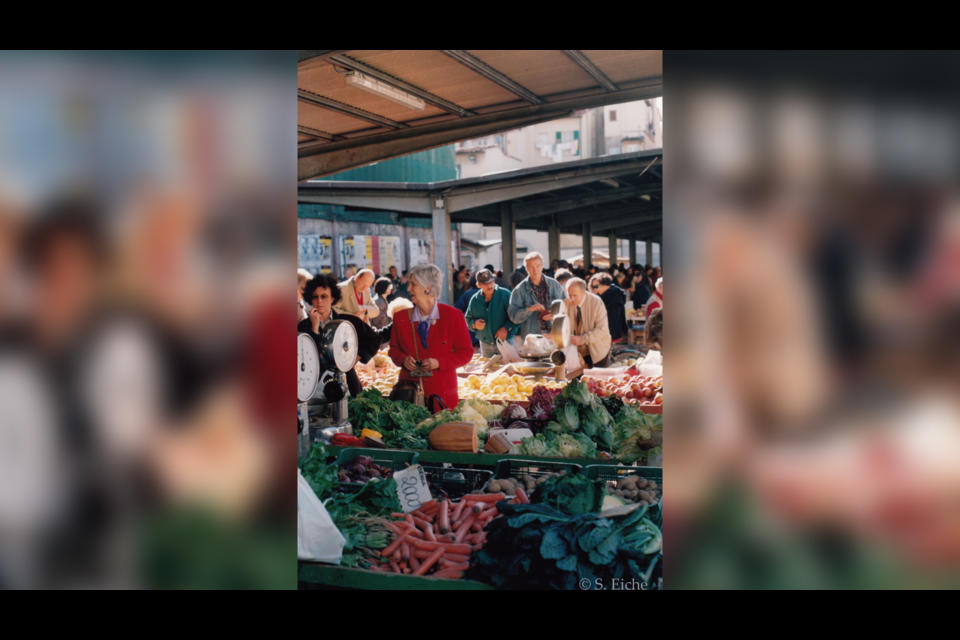For the last three decades, we in North America have been hearing a lot about the Mediterranean diet, but interest in the subject is much older. In the 1950s the American scientists Ancel and Margaret Keys published Eat Well and Stay Well, which was followed in 1975 by How to Eat Well and Stay Well the Mediterranean Way. It took another fifteen years for the kind of diet they promoted to reach the wider public and gain popularity. According to the Mediterranean diet, you should consume plenty of grains, vegetables, fruits, nuts and olive oil every day, but proteins and sweets in smaller portions and less often.
It’s easy to confuse the Mediterranean diet with the Mediterranean way of eating. In fact, it seems to me that calling a diet Mediterranean because it emphasizes vegetables, fruits, grains and nuts over other foods is more of a marketing ploy than a truthful label. Michael Pollan has been recommending that kind of a diet — based on natural instead of processed foods — for well over a decade.
Although it’s doubtlessly better to eat according to the so-called Mediterranean diet than to resort to the quick-and-easy meal fixes proliferating in every supermarket here, the real Mediterranean way of eating is an experience that can’t be imported as easily as you can import a bottle of extra virgin Italian olive oil. To savour the real, genuine Mediterranean diet you’d need to transplant all that makes life around the Mediterranean what it is, because it’s not simply about food, it’s also about traditions, attitudes and lifestyles.
Of course, in the past few decades the way of life has changed dramatically in Italy, possibly more so than elsewhere in the developed world. It’s no coincidence that Italy was where the Slow Food Movement was born in 1986; it became international three years later. I was fortunate enough to catch the tail-end of the "old" way of life there when I moved to Florence in the 1970s and stayed for over three decades.
I remember that meals were often scheduled to allow families to sit down at table together. Many businesses, especially grocers, shut their doors over lunchtime, some not reopening until 4 or 5 p.m. The evening meal was eaten after shops had closed, at 7:30 or 8 p.m.
In major cities, food markets were scattered throughout the various districts. They were open daily except Sundays, year-round, usually from 7 a.m. until 2 p.m. In Florence, I had two markets within a 10-minute walk of my flat. Many of the vendors of vegetables and fruits were farmers. In spring and summer, their produce was often harvested a few hours before markets opened.
In addition to the markets and regular grocery stores, there were stands, sometimes no more than holes in walls, where you’d find various food vendors. I lived near Piazza San Pier Maggiore, where there was a vaulted passage leading from the piazza to a street. In the passage walls were small rooms, one of which was occupied by a woman surrounded by huge pots with fagioli (beans) and leafy greens such as bietole (chard) and spinaci (spinach). Once the greens were cooked, she’d squeeze out the water, roll them into balls, and sell them as palline di verdura (balls of leafy greens).
The church of San Pier Maggiore, which had stood on the piazza, was largely destroyed in the 18th century, although the basic framework remains. The nave is now a street, and in two former chapels are a store selling poultry and another selling dairy products. Next door is the Granamarket, selling nothing but cheeses. A few metres further on is a bakery. Everywhere you turned, food was being sold and consumed.
The streets around there were rarely quiet. Not because of car traffic but because of the number of people walking, either on errands, or out for a stroll, friends heading for one of the many places where you’d drink coffee or an aperitif, and sit outside to watch the pageant of life. Family, friends, conversation, fresh air — these are all as much components of the Mediterranean diet as are food and drink.
This week I heard that Vancouver had made the temporary patio regulations permanent. The "patio culture" could continue. That’s a good start towards a more well-rounded attitude to life, closer to what is the norm in countries such as Italy. Hopefully, people will be persuaded to look less at their narrow smartphones and more at the wide world around them.
But can anything be done to make our “Richmond diet” more like the Mediterranean diet? Years ago people living in Vancouver would drive to Richmond to buy their fresh fruits and vegetables. Back then, farmland was for farming. If the government encouraged and adequately supported more of our local farmers, more of us could enjoy and benefit from freshly harvested, local produce for a good part of the year. Let’s face it. Few of us enjoy or benefit from the proliferation of mega-mansions on farmland.
Sabine Eiche is a local writer and art historian with a PhD from Princeton University. She is passionately involved in preserving the environment and protecting nature. Her columns deal with a broad range of topics and often include the history (etymology) of words in order to shed extra light on the subject.



